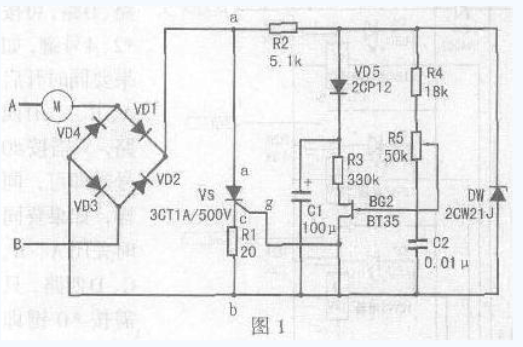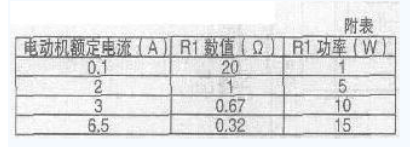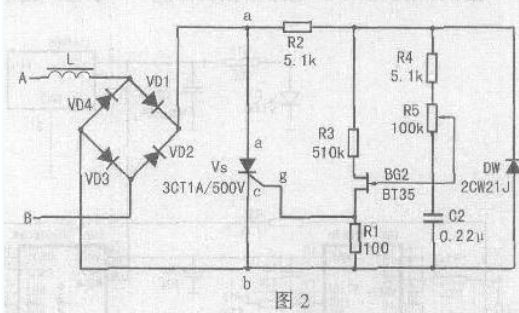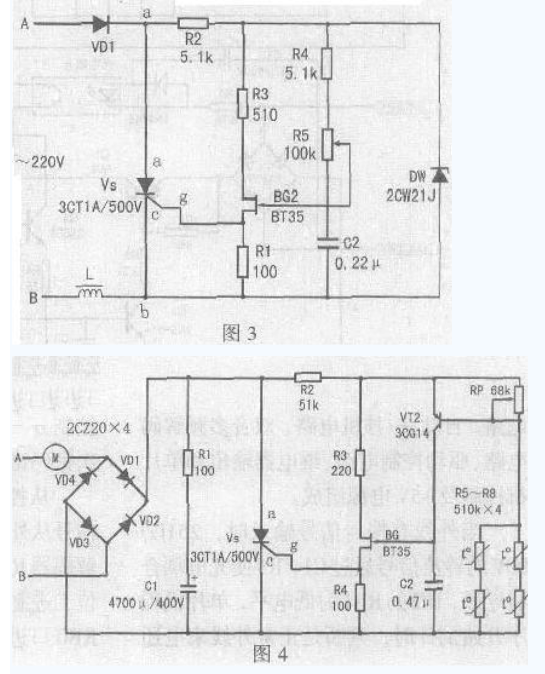Simple motor speed control circuit analysis
This article describes a simple motor speed control circuit, without the use of mechanical gear transformation to change speed, improve the efficiency of the use of mechanical equipment.
This simple electronic speed control circuit is suitable for 220V mains single-phase motor. The rated current of the motor is within 6.5A and the power is about 1kW. It is suitable for household electric fans, ceiling fan motors and other single-phase motors. If the circuit is modified, it can be For dimming, electromagnetic vibration regulator, electric fan temperature automatic transmission and other purposes. Its circuit is shown in Figure 1.
Silicon diode VD1 "VD4 constitutes a bridge full-wave rectifier circuit, the bridge and the motor in series in the circuit, the bridge provides full-wave rectification voltage to the thyristor VS. When VS is connected, the bridge presents the low of the motor series connection. When the point A in Figure 1 is a negative half cycle, the current flows through the motor, VD1, VS, R1, and VD3 to form a loop, and when B is a positive half cycle, the current flows through VD2, VS, R1, VD4, and motor M, forming a loop. The alternating current is obtained at the motor end, and the voltage at both ends of the motor is mainly determined by the thyristor VS conduction level. , To achieve the purpose of pressure regulation, motor terminal voltage Um = U1-UVD1-Uvs-UR1-UVD3, in the above formula, UVD1, UVD3 pressure drop are very small, and feedback UR1 is not large, so the motor terminal voltage Simplified to Um=U1-Uvs.

The thyristor VS trigger pulse is generated by a simple single junction transistor VS circuit. The capacitor C2 is charged to the stable voltage UZ of the regulator DW through the resistors R4 and R5. When the C2 is charged to the peak voltage of the single junction transistor, The single junction transistor triggers and outputs a pulse to turn on the thyristor. After the emitter voltage of the single-junction transistor is fully attenuated, the single-junction transistor is turned off, and once the VS is turned on, the voltage between the two points a and b falls below the stable voltage UZ of the Zener diode DW, and the capacitor C2 is recharged. Depends on the voltage between the points a to b, because the voltage of the regulator tube has dropped outside its conduction area, the voltages at points a to b depend on the motor current, the voltage drop when R1 and VS turn on . Thus, when VS is turned on, the charging current of the capacitor C2 depends on the current of the motor, and in this case feedback is obtained, which makes the problem of the loss of the torque received by the motor at the low speed corrected.
The value of the feedback resistor R1 is experimentally determined. Therefore, during the on-time period of the VS, the capacitor C2 cannot be charged enough to trigger the high voltage of the single-junction transistor. However, the capacitor C2 is charged to a value determined by the motor current. A value. If the current of the motor increases during a certain on-period, the voltage on C2 also increases, so at the beginning of the next cycle, C2 does not need to wait that long enough to charge the single-crystal peak voltage. In this case, the firing angle is reduced (the conduction angle is larger) and the square root voltage applied to the motor increases proportionally, resulting in an increase in the effective torque. The diode VD5 and the capacitor C1 prevent the feedback caused by the triggering of the single crystal during the conduction period. The value of the feedback resistor R1 is specifically shown in the attached table.

R2 is a current limiting resistor, which should ensure stable DW1 in the regulation range, and the stable current is about 10â€20mA. It ensures the phase shift angle of the pulse. When R2 increases, the phase shift angle decreases, and the voltage adjustment range of both ends of the motor cut back.
R4 shall ensure the upper limit of the voltage across the motor. When R4 increases, the upper limit of the voltage output to the motor will drop.
R3 is used for single-junction transistor temperature compensation. When R3 increases, the temperature characteristic is better. This circuit is also suitable for the use of reversible motor speed regulation. The load terminal voltage adjustment range is continuously adjustable from 35 to 215V. For the motor or electromagnetic vibration coil, it does not require compensation for the torque, the circuit can be further simplified, the circuit shown in Figure 2, its working principle with Figure 1, the main output voltage adjustment range is 35 "215V, R1's role is To ensure the amplitude of the VS output pulse, R1 increases, the output pulse also increases, if the dimming, you can change the load to a light bulb.

If the maximum value of the load voltage does not need to be high, then the bridge rectifier circuit can be changed to a half-wave rectification, and the voltage adjustment range of its output to the load is 30 to 100V. Its working principle is the same as above. The electrical schematic is shown in Figure 3. Fan speed control circuit shown in Figure 4, the circuit uses a thermistor, when the ambient temperature rise or fall, the resistance value changes, resulting in continuous changes in VT2, so that the SCR conduction angle moves back and forth, change the fan two The voltage at the end of the fan motor changes. When the ambient temperature rises, the fan speed is high, otherwise it is low.

When selecting components, diode VD1 "VD4 withstand voltage is higher than 400V, rated current is greater than 0.4A; SCR VS withstand voltage is greater than 500V, rated current is 1A; Single junction transistor BT35 partial pressure ratio η is greater than 0.5; Transistor 3CG14 β Greater than 80.
After the circuit is installed, connect the fan to the circuit, adjust the RP so that the fan just stops, and then use a soldering iron near the thermistor. When the thermistor goes high, the fan speed becomes faster. The soldering iron leaves the thermistor, the temperature drops, and the rotation speed changes slowly. When working, the RP should be adjusted to an appropriate position.
400Puffs Disposable Vape,Disposable Vape Pens,Puff Bar Disposable Vape,Disposable E-Cigarette Vape Pen
Shenzhen Uscool Technology Co., Ltd , https://www.uscoolvape.com